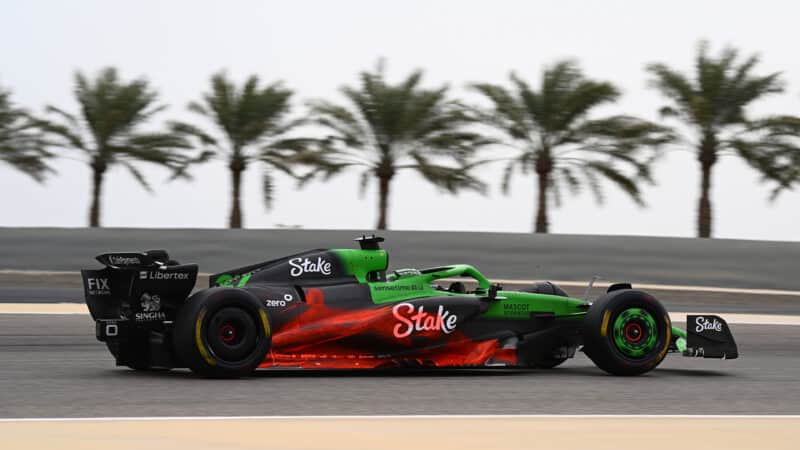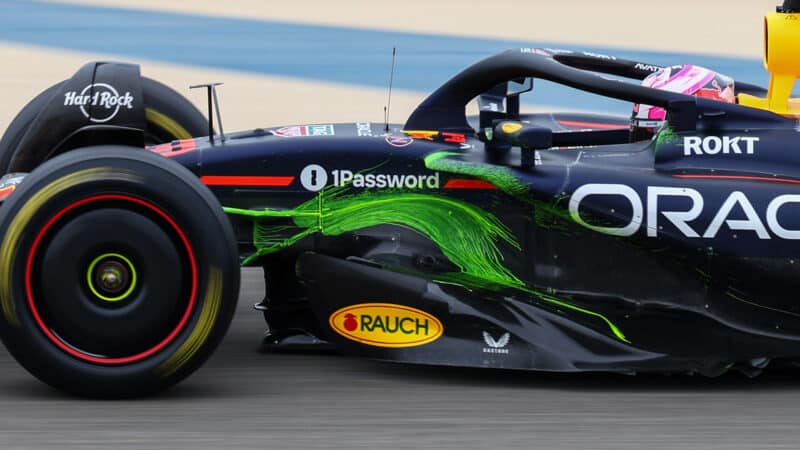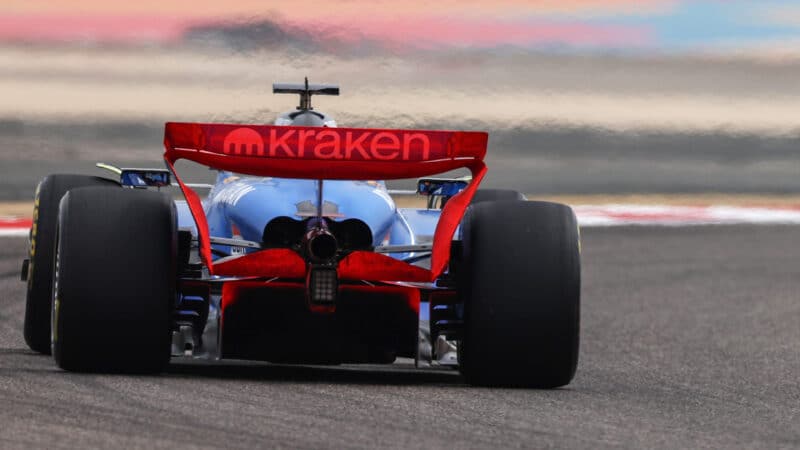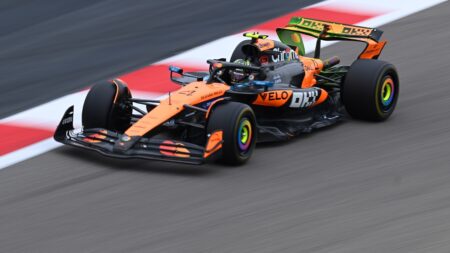Once the car returns to the pitlane, teams will usually surround it with screens — so to stop other teams getting too close a look — before taking pictures and wiping the flow-vis off.
Those images are then analysed — often back at the factory — by aerodynamicists, whose testing throughout the off-season is largely be contained to computer simulations, with limited time allowed in the wind tunnel. Painting cars in flow-vis — especially during pre-season testing — gives them a vital opportunity to see how real-world physics are impacting their cars.
During 2025 pre-season testing in Bahrain, several teams have wasted no time in pouring a fresh coat of flow-vis on to their new designs.
Red Bull applied some just behind the front wheels (as shown at the top of the page), to see how air flows towards the air intake and around the sidepods.. Elsewhere, Sauber seemingly used a month’s supply of flow-vis on its sidepod and floor — which have a significant impact on downforce under the current ground effect regulations — while Williams applied some to its new car’s rear wing.

Sauber analyse its sidepod design with flow-vis
Getty Images



